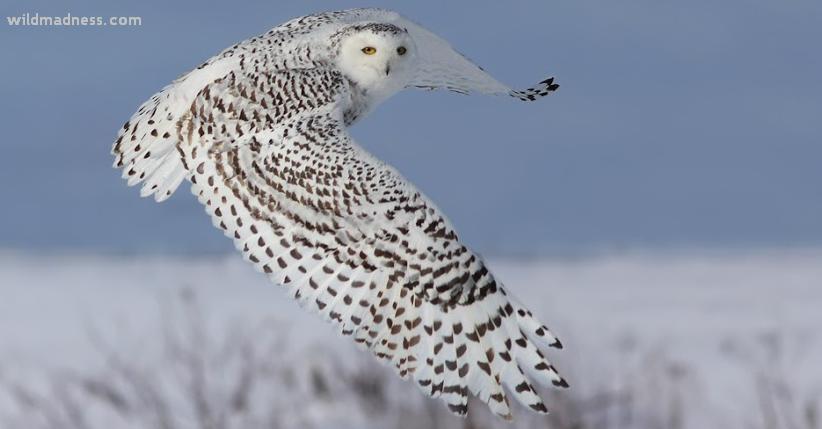| Snowy Owl |

|
 |
|
Interesting Facts About the Snowy Owl: Snowy Owls are diurnal. Diurnal means that unlike most other owls they are active and hunt during the day and night. Most other owls hunt only at night. The diet of Snowy Owls consists mainly of lemmings. What are lemmings? Lemmings are small rodents, usually found in or near the Arctic. They are known to sit and wait for their prey and spend most of their time perched still and silent on prominent lookouts. Do the owls nest in trees? No, the Snowy Owl buries their nest on the ground in a level area. They lay anywhere between 0-9 eggs at a time. An adult Snowy Owl can eat three to five lemmings per day, or up to 1,600 per year. No Chewing! A Snowy Owl swallows its food whole and after a few hours of eating, an owl's pellet is usually fully formed, but it usually remains in the body for at least several hours more. The feathers of Snowy Owls have no pigment, leaving more space for air which helps them to keep warmer because air is such a good insulator. Does the snowy owl have hair on their legs and/or feet? Yes, their legs and toes are heavily feathered to protect them from the harsh weather in cold arctic regions. Snowy Owls have predators. Even though they are top of the food chain, the Snowy Owl, does have a few prdeators such as the artic fox and other wolves. Males defend the nest by standing guard nearby while the female incubates the eggs and broods the young. The Snowy Owl has other names. Arctic Owl or Great White Owl are other common names used for the Snowy Owl. A group of owls also has many different names, including a bazaar, glaring, parliament, stooping and a wisdom of owls. How Big does a Snowy owl get? The Snowy Owl has a body length of 20 - 27 inches, a wingspan of 4 1/2 - 5 1/2 feet, and weighs 3 1/2 - 6 pounds. |
Links: |